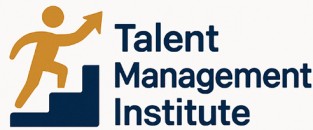
Understanding the Role of LMS in Talent Management
The Integral Role of Learning Management Systems in Talent Development
From ensuring that new hires have necessary skills to facilitating ongoing professional development, organizations increasingly look to learning management systems (LMS) to support their talent management goals. An LMS provides a structured, efficient way to both deliver and track training initiatives while meeting the evolving demands of the workforce. To maximize their effectiveness, LMS platforms are often cloud-based, offering easy accessibility and scalability. These systems are designed not just for traditional learning purposes but also to support the entire spectrum of talent management functions, including skill gap analysis, performance tracking, and career path planning. Incorporating an LMS within your organization enables management to:- Streamline Content Delivery: Facilitating online training makes large-scale initiatives feasible, ensuring every employee receives consistent, up-to-date training content.
- Improve Employee Engagement: Interactive features and personalized learning paths can boost user engagement, ensuring the learning process is effective and enjoyable.
- Provide Valuable Data Insights: An LMS can capture detailed data on user engagement, performance metrics, and training outcomes, enabling informed decisions on future training and development initiatives.
- Support Organizational Goals: Alignment between the LMS capability and organizational objectives is crucial. This ensures that the LMS facilitates not only learning but also supports broader talent management strategies.
Assessing Organizational Needs and Goals
Determining Your Organizational Objectives
When considering the implementation of a learning management system (LMS), it is crucial to first assess your organization’s needs and goals. By establishing your objectives, you can ensure that the LMS aligns with your broader talent management strategy and effectively meets the expectations of your employees and management team.
Here are steps to clearly identify your organization’s requirements:
- Define Clear Learning Goals: Outline what you aim to achieve with the LMS. Is it to enhance online training capabilities, improve content delivery, or streamline employee training programs? Having clear learning goals will guide your selection process.
- Analyze Current Training Systems: Evaluate existing training programs to identify gaps. Understanding what already works and where improvements are needed will ensure your new platform does not repeat past issues.
- Involve Key Stakeholders: Engage stakeholders early in the process. Their insights are vital in shaping the LMS to meet varied needs, from user experience to management requirements.
- Consider Data Management: A robust LMS should efficiently handle data migration and content management. Assess how the system will integrate with your existing data management protocols.
- Plan for Scalability: Ensure the LMS can adapt to future needs. Your organization may grow, and so should your system's ability to manage increasing demands.
By meticulously assessing these factors, your organization will be poised for a successful LMS implementation project. This preparation sets the foundation for selecting the right LMS platform, guaranteeing it supports your organizational vision. For more insights on aligning learning centers with talent management strategies, check out this article.
Selecting the Right LMS for Your Organization
Choosing the Best Learning Platform for Your Business
Choosing a Learning Management System (LMS) platform is a pivotal decision in the entire LMS implementation process. A successful LMS selection starts with a comprehensive understanding of your organization's specific needs, goals, and employee training objectives. It’s critical to choose a platform that aligns with these elements to maximize efficiency and support your organizational development.
Before diving into the selection process, your implementation team must clearly define the objectives you aim to achieve with the LMS. Consider how the system will integrate into your current management systems and how it can streamline the learning and training processes across your organization. This step is foundational to ensuring a good fit between your business needs and the LMS capabilities.
The selection of an LMS is not one-size-fits-all. Important factors to consider include:
- Features and Functionalities: Evaluate the specific features that different LMS platforms offer. Does the system support online training and provide flexible options for training content delivery? Is it cloud-based, facilitating easier access and user management? These are crucial questions to address.
- User Experience: The platform should offer an intuitive user interface to ensure ease of access for all employees. A well-designed interface supports efficient learning and minimizes the time required for training.
- Scalability: As your organization grows, so should your LMS. Choose a system that can adapt to your expanding training program requirements over time.
- Integration: Ensure the chosen LMS can seamlessly integrate with existing employee management systems and other platforms employed within your organization.
- Support and Training: A reliable LMS provider should offer strong customer support and substantial training materials to aid in a smooth implementation.
Once your selection criteria are established, the implementation project team should engage in a thorough evaluation of potential LMS vendors. This involves gathering and analyzing data about each platform, conducting system demos, and considering feedback from potential users. This proactive approach supports the development of a well-informed implementation plan, positioning your organization for a successful LMS journey.
For more insights into skill utilization and talent management strategies, explore the concept of skill utilization in talent management to further align your LMS strategy with organizational talent goals.
Preparing for a Smooth LMS Implementation
Ensuring a Seamless Journey in Learning Management System Setup
Successfully implementing a learning management system (LMS) within an organization requires meticulous planning and execution. Here are some strategies to ensure a smooth LMS implementation process:- Craft a Detailed Project Plan:
- Start by developing a comprehensive implementation plan, detailing each phase of the LMS installation. Identify milestones and allocate resources effectively.
- Set realistic timelines to avoid overburdening your implementation team and ensure a focused approach.
- Assemble a Skilled Implementation Team:
- Forming a diverse team with clear roles is crucial. This team should consist of IT specialists, content creators, human resource professionals, and other stakeholders.
- Regular meetings to discuss project updates can help maintain alignment and address any arising issues promptly.
- Prepare for Data Migration:
- Plan a thorough data migration strategy, accounting for existing training records, user profiles, and other critical information.
- Test data transfer scenarios in stages to mitigate the risk of data loss or corruption during the migration process.
- Select the Right LMS Platform:
- Choose a system that aligns with your organization’s goals and needs. A cloud-based platform may offer flexibility and scalability for evolving training demands.
- Develop Engaging Training Content:
- Effective training content is key for successful LMS engagement. Develop or review existing content to ensure it aligns with learning objectives and employee needs.
- Offer a mix of online training formats like interactive modules, videos, and quizzes to enhance user engagement.
- Encourage Stakeholder Involvement:
- Foster communication with all stakeholders throughout the implementation. Their input can provide valuable insights and foster a sense of ownership among employees.
- Provide Robust Employee Training:
- Create a training program for employees to help them navigate the new LMS. Training should cover system functionalities and user best practices, ensuring they feel supported and confident.
- Establish Ongoing Support:
- Offer continuous support through accessible resources such as FAQs, helpdesks, or customer success representatives.
- Provide regular LMS updates and support sessions to keep the team informed and engaged.
Training and Supporting Your Team
Comprehensive Training Initiatives
Successfully rolling out a learning management system requires more than just deploying the platform; it demands a strategic approach to training and support for your team. An LMS implementation is only as effective as the team’s ability to use it proficiently. Therefore, investing time and resources into employee training is crucial. Before launching your LMS, consider the following steps to ensure your organization is prepared:- Develop a Structured Training Program: Start by designing a comprehensive training program tailored to the specific needs of your users. This includes creating relevant training content that aligns with your organization's goals and the skills your team needs to develop.
- Incorporate Both Onboarding and Continuous Learning: While initial training is critical, ongoing support and learning are equally important. Encourage your employees to continually engage with the LMS to master its features over time.
- Leverage Online Training Sessions: Utilize online training sessions to impart knowledge effectively. These can be live with an instructor or asynchronous to fit varying schedules. Tailoring the format to user preferences can boost engagement levels significantly.
- Identify Key User Personas: Target training initiatives around the core user roles within your organization. Understanding the needs of different personas allows you to tailor content, making the learning process more efficient.
- Provide Access to Support Resources: Ensure that users have access to training support, such as help desks, FAQs, and user forums. A strong support system can smooth the learning curve and boost user confidence.
Supporting Your Team Through Change Management
Change can be challenging, particularly when it involves the adoption of new technology. Preparing your team for these transitions focuses on understanding and managing their apprehensions about the new system. Being proactive here can also reduce potential resistance:- Communicate the Implementation Plan Clearly: Keep your team informed about the implementation project stages and changes they might experience. Transparency fosters trust and acceptance.
- Encourage Feedback: Provide channels for feedback and ensure that your team feels heard. This can highlight areas where the system or training needs improvement, allowing real-time adjustments in your implementation process.
- Highlight Benefits and Success Stories: For a successful LMS uptake, focus on articulating how the new system will make their work more manageable, ultimately benefiting both the employees and the organization.













